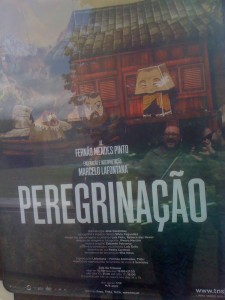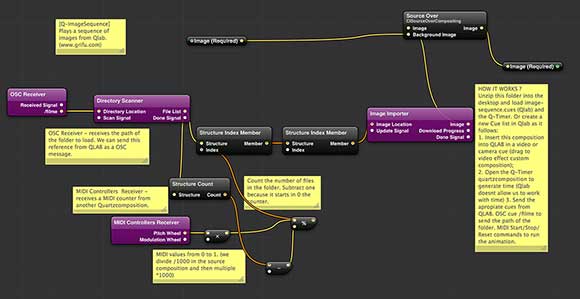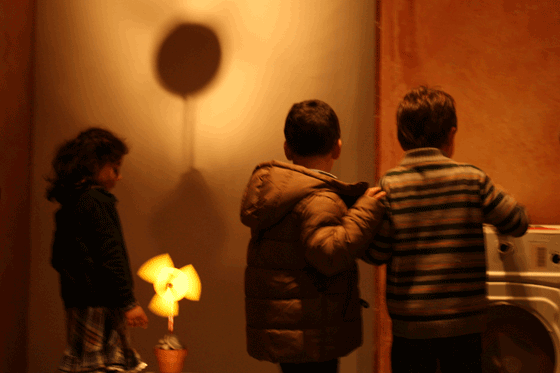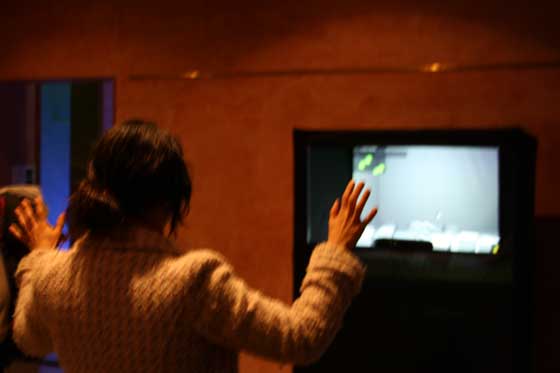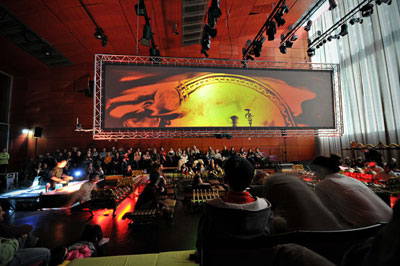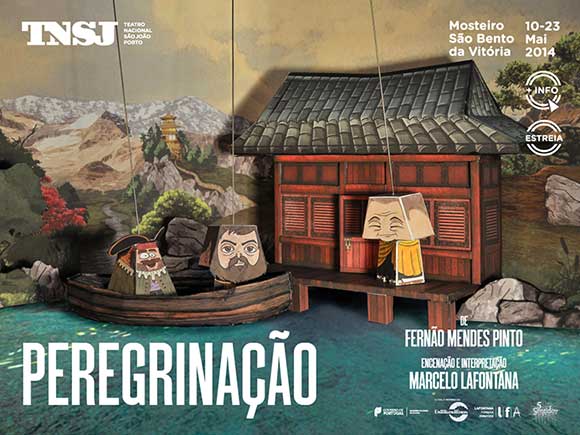
From the 10th till the 23th of May at Mosteiro São Bento da Vitória, Porto.
Coproduction Lafontana – Animated Forms / Teatro Nacional São João (TNSJ) from the original text of Fernão Mendes Pinto, with the interpretation of Marcelo Lafontana.
Inspired by the adventures of Fernão Mendes Pinto, a portuguese explorer, reported
from the book “Peregrinação” , published in 1614, Marcelo Lafontana makes a journey through strange stories that are presented in a miniature world.
Through the intersection of puppetry, in particular, the expressiveness of paper theater with the cinematic language, this small world becomes a large space of illusion in which the narrative arises.
The stage, is transformed into a film studio, where scenarios and characters drawn and cut from cardboard are handle in front of video cameras. The images are captured by a multimedia architecture providing image processing, image mixing, sound effects, chroma key, performance animation, and all happens in real-time. The final result is projected on a screen, like a sail of a boat that opens to the charms of a journey through the imagination.
from
Fernão Mendes Pinto
staging e interpretation
Marcelo Lafontana
dramaturgy
José Coutinhas
scenography
Sílvia Fagundes
design of the characters and scenarios
Luís Félix, Rebeca das Neves
photography
JPedro Martins
music
Eduardo Patriarca
Multimedia (architecture and contents)
Luís Grifu
Lighting design
Pedro Cardoso
staging assistance
Rita Nova
I´ve implemented some of the digital puppetry methods in this project. Methods and tools are described in another post in this blog.

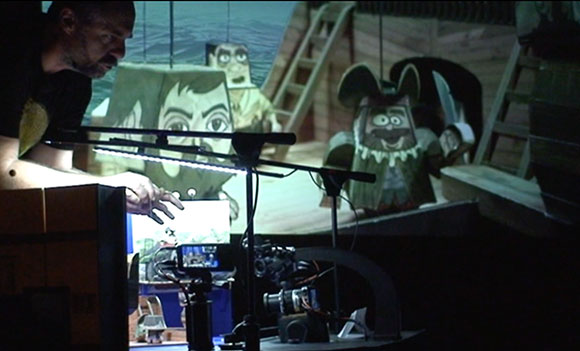



Street Outdoor
